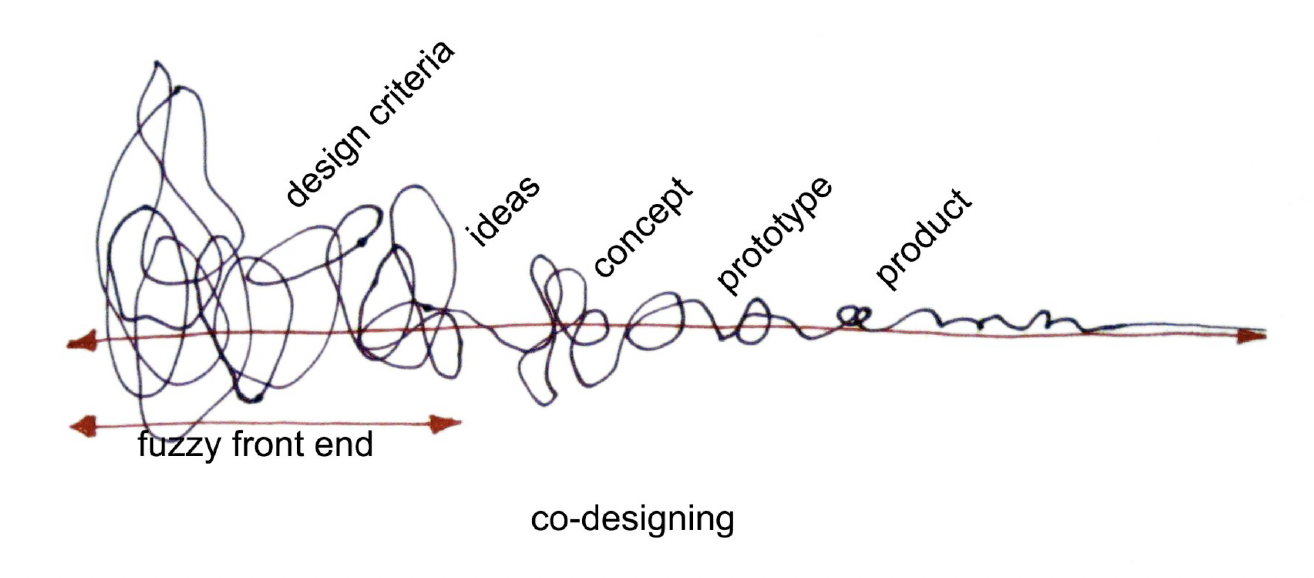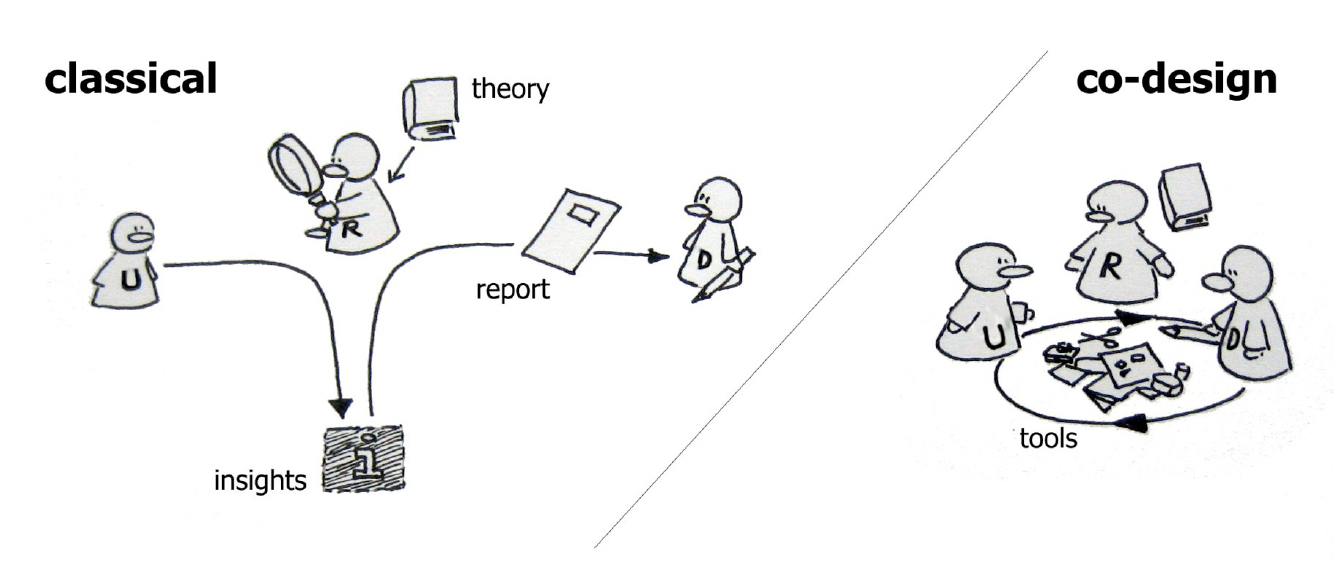Co-creation and the new landscapes of design
Elizabeth B.-N. Sanders & Pieter Jan Stappers
The article "Co-creation and the New Landscapes of Design" highlights a pivotal shift in design practices towards co-creation, where users actively participate in the design process alongside designers and researchers. This approach challenges the traditional user-centered design, which often positions users as passive subjects, by emphasizing their role as co-designers.
Figure 2: The front end of the design process has been growing as designers move closer to the future users
of what they design.
Key Points:
Evolution of Design Roles: The transition from a user-centered approach to co-design transforms the roles of designers, researchers, and users. “The person served through the design process is given the position of ‘expert of his/her experience’” (Sanders and Stappers, p. 8) which allows for deeper insights into user needs and preferences.
Participatory Design: Sanders and Stappers (2018) emphasize the importance of participatory design, stating, “Participation at the moment of idea generation is an important place to be practicing participatory design” (p. 4). This involvement fosters a collaborative environment that enhances creativity and innovation.
Emerging Domains: Co-creation encourages the emergence of new design domains that prioritize collective creativity and address complex societal issues.
THESIS PROJECT takeaways
Incorporating co-creation into my thesis project can significantly enhance its design and functionality. By actively involving sprinters in the concept development process, I can gain valuable insights into their training needs and preferences, leading to a more tailored and effective solution. This participatory approach not only fosters user engagement but also cultivates a sense of ownership among athletes.
Figure 3 Classical roles of users, researchers, and designers in the design process (on the left) and how they
are merging in the co-designing process (on the right).
Furthermore, applying co-design principles allows for the exploration of new features and functionalities that directly address the challenges sprinters face in their training. Embracing the collective creativity of both designers and users can lead to innovative solutions that resonate deeply with the target audience, ultimately resulting in a more impactful and successful application.
Sanders, E. B. N., & Stappers, P. J. (2008). Co-creation and the new landscapes of design. CoDesign, 4(1), 5–18. https://doi.org/10.1080/15710880701875068



